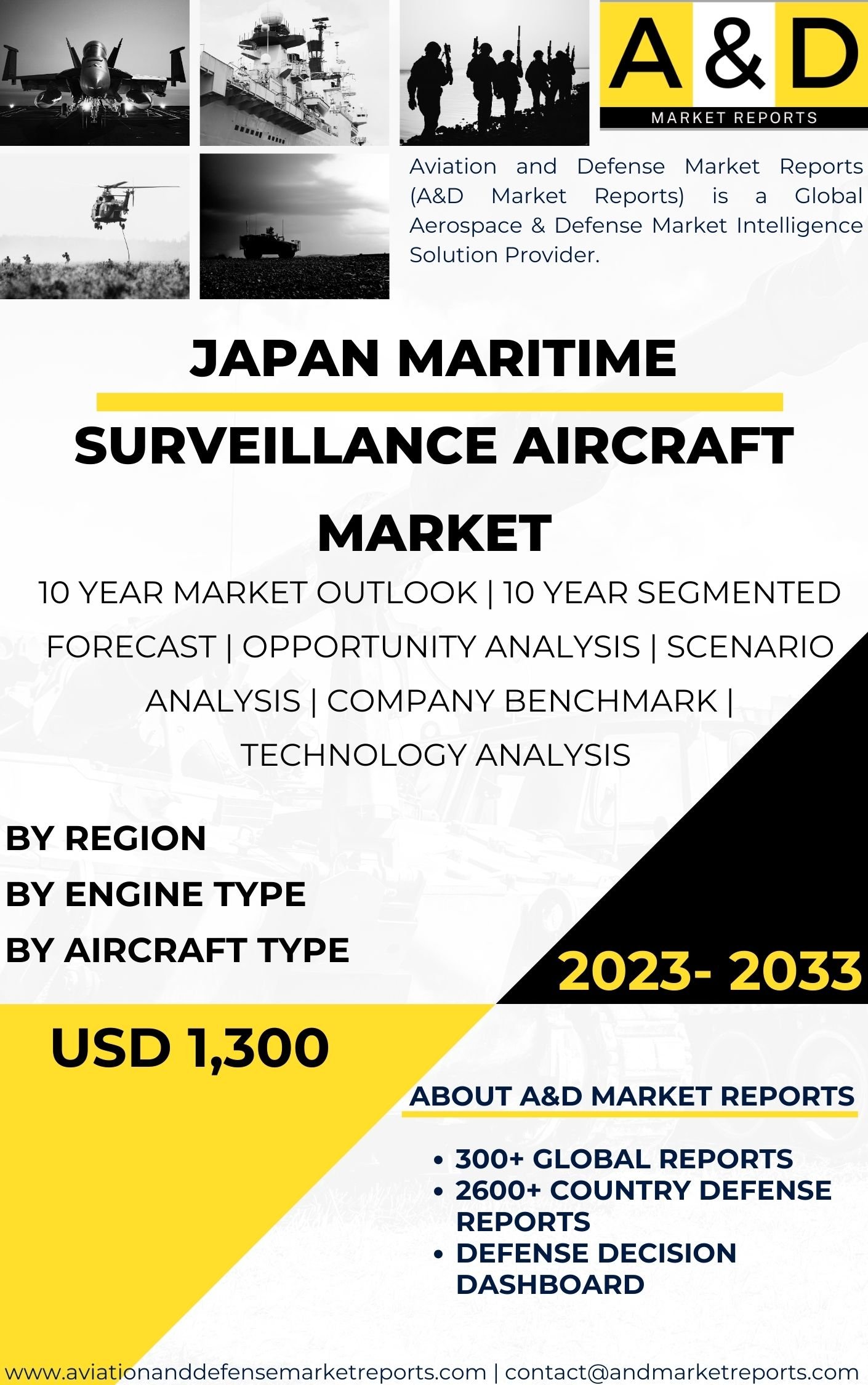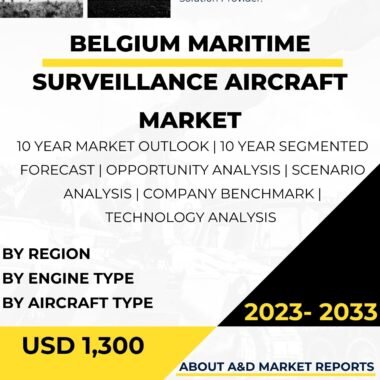Description
The maritime surveillance aircraft market in Japan has witnessed significant growth and strategic importance in recent years as the nation focuses on enhancing its maritime security and surveillance capabilities in the Indo-Pacific region. Maritime surveillance aircraft are critical assets for monitoring and safeguarding Japan’s territorial waters, exclusive economic zones (EEZs), and maritime boundaries. As Japan faces evolving global security threats, maritime disputes, and challenges to its maritime interests, the demand for advanced maritime surveillance aircraft has grown, leading to increased research, development, and investment in this field.
Maritime surveillance aircraft play a crucial role in Japan’s overall defense strategy, providing essential capabilities for maritime domain awareness, anti-submarine warfare (ASW), anti-surface warfare (ASuW), search and rescue (SAR), and humanitarian assistance and disaster relief (HADR) missions.
One of the primary applications of maritime surveillance aircraft in Japan is in maritime domain awareness. These aircraft are equipped with advanced sensors, radar systems, and surveillance equipment that enable them to conduct long-range patrols over vast maritime areas. They can detect and track surface vessels, submarines, and other maritime threats, providing real-time situational awareness to maritime forces and policymakers.
Moreover, maritime surveillance aircraft are also critical assets for ASW operations. Equipped with sonobuoys, magnetic anomaly detectors (MAD), and other ASW systems, these aircraft can detect, track, and engage hostile submarines. Ensuring a strong ASW capability is vital for protecting Japan’s maritime interests and countering potential submarine threats in its waters.
Additionally, maritime surveillance aircraft are also utilized in ASuW operations. They can identify and track surface vessels, including potential hostile vessels, and engage them with precision-guided munitions if necessary. This capability is essential for deterring maritime threats and safeguarding Japan’s maritime trade and security.
Maritime surveillance aircraft in Japan also play a crucial role in search and rescue operations, particularly in Japan’s extensive EEZ and maritime areas. Equipped with specialized SAR equipment, these aircraft can rapidly locate and rescue individuals in distress at sea, providing critical support for maritime safety and humanitarian missions.
As Japan emphasizes indigenous defense capabilities, the domestic production and development of maritime surveillance aircraft have seen substantial growth. Collaborations between the government, defense industry, and research institutions have fostered innovation, leading to the creation of advanced maritime surveillance platforms tailored to Japan’s specific defense requirements.
Japan’s alliance with the United States has also played a significant role in the development of its maritime surveillance capabilities. Through this partnership, Japan has access to advanced technologies and expertise, contributing to the modernization of its defense forces and enhancing interoperability with allied nations.
The maritime surveillance aircraft market in Japan also benefits from advancements in aerospace technology, sensor systems, and data processing capabilities. Manufacturers have leveraged developments in lightweight materials, advanced avionics, and data fusion algorithms to enhance the performance and capabilities of maritime surveillance aircraft.
However, the maritime surveillance aircraft market in Japan also faces challenges related to cost, range and endurance, and addressing the evolving threat environment. Developing and maintaining advanced maritime surveillance aircraft can be costly, requiring significant investment in research, development, production, and training.
Moreover, maritime surveillance aircraft must have sufficient range and endurance to conduct extended patrols over vast maritime areas and cover Japan’s extensive EEZ effectively.
Addressing the evolving threat environment is also crucial, as maritime surveillance aircraft must adapt to emerging threats, including advancements in adversary submarines, surface vessels, and unmanned maritime systems.
In conclusion, the maritime surveillance aircraft market in Japan has witnessed significant growth and strategic importance, driven by the nation’s focus on enhancing its maritime security and surveillance capabilities in the Indo-Pacific region. Maritime surveillance aircraft provide critical capabilities for maritime domain awareness, ASW, ASuW, SAR, and HADR missions, making them integral to Japan’s defense forces. The collaboration between the government, defense industry, and research institutions, as well as international partnerships with allied nations, fosters innovation and contributes to the growth of the domestic maritime surveillance aircraft market. Addressing challenges related to cost, range and endurance, and the evolving threat environment is crucial for further enhancing Japan’s maritime security capabilities and ensuring its ability to maintain a reliable and high-performance defense force, contributing to the modernization and effectiveness of Japan’s maritime surveillance efforts. With its strategic focus on enhancing indigenous defense capabilities, Japan remains committed to leveraging advanced maritime surveillance aircraft technologies to enhance its maritime security and contribute to regional and global maritime safety and stability.




